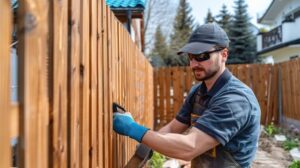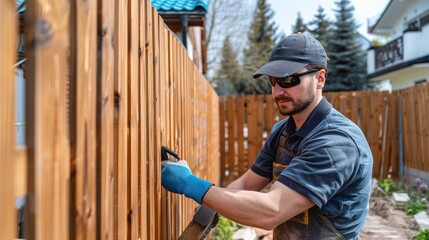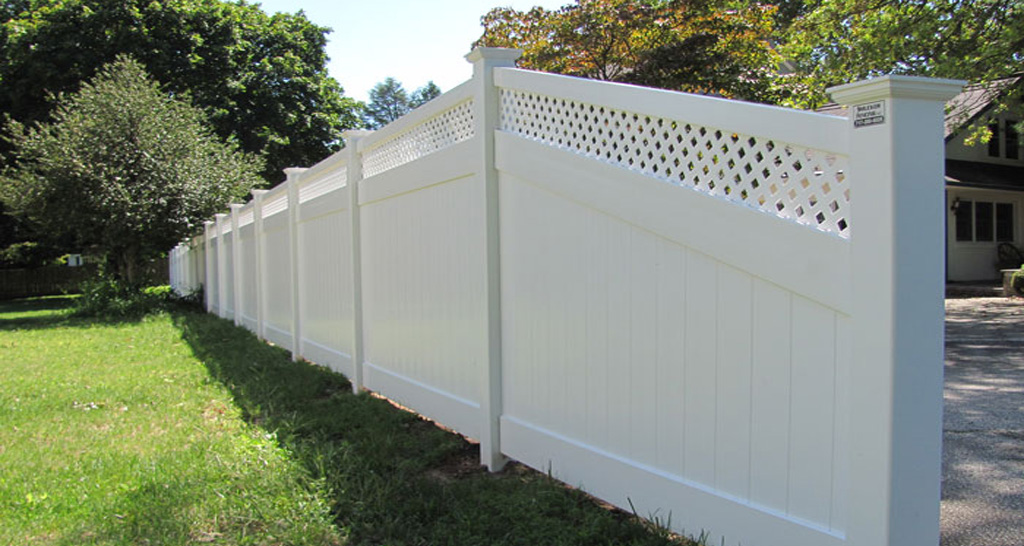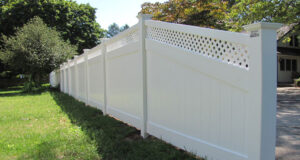If you notice a crooked gate or fence section, it’s time to call in a service technician. Check with your home insurance provider to see if storm damage is covered.
A leaning fence could be caused by soil erosion, rotting posts or even that big oak tree in your Alpharetta backyard pushing against it. Regular inspections can prevent this problem from getting out of hand.
If a section of your fence comes down, it can be a serious safety hazard. It can also impact the aesthetic of your yard and impose limitations on your property. For these reasons, it is important to address any fallen sections promptly. The good news is that addressing fence damage due to a collapsed section often requires little more than installing metal braces or additional posts.
A professional can perform this work, which typically costs around $150 for small holes and cracks. For more extensive repairs, including repairing a gate, it may cost closer to $300 or more. In either case, a skilled professional can quickly and affordably repair these issues.
Wood fences rely on traditional wooden posts, which can sink or sag over time. These posts are secured in concrete footings, which can also crumble or shift over time. This can cause the entire fence to become unstable and potentially fall over. This problem can be addressed by replacing the concrete and securing the post in place.
While this isn’t the most common type of fence damage, if it occurs, it can be costly to repair. A homeowner might be able to cover the damaged area with a tarp for a temporary solution, but a permanent fix will require a professional service technician to remove the old board and install a new one. It will also be necessary to ensure the replacement is a precise match and properly sealed against moisture to prevent future problems.
If a fence is shared between two or more properties, it’s important to consider who should pay for the repair costs. There may be existing agreements or easements in place that help to clarify responsibilities and maintenance obligations. If not, open and honest discussions between neighbors can be the best way to resolve the situation fairly.
Hinges That Sag
During the repair process, it may be necessary to move or adjust a sagging hinge. This can help keep the door in a more even position and prevent it from hitting the floor. A sagging hinge could be due to frequent use, improper installation or simply age. In some cases, this problem may not be fixable and it may be more cost efficient to replace the entire gate panel.
The first thing to do when repairing a sagging hinge is to make sure that it is supported, as this will make the work much easier. This can be done by putting something underneath the door and supporting it with a ladder or some other type of support system. Once this is done, removing the affected hinge is the next step.
This can be a little difficult as the screws in the hinge will likely be stripped or loose, which will require a bit of force to remove the pin and shave off some of the wood. Once this is done, the holes will need to be filled in using a wood epoxy or wood filler.
After the hole is filled and the surface has dried, the hinge can be painted to restore its appearance and protect it from further damage. A high quality oil based primer should be used with one or two coats. A good primer can contain rust preventative additives to reduce the need for future treatments.
Regular maintenance can also prevent sagging hinges by tightening and changing out the screws as needed. Keeping the hinges properly oiled can also help to keep them in good working order. If these tips don’t resolve the issue, a professional conservator can be contacted for advice and help.
Split Boards
The wood of a fence can be susceptible to damage and decay, especially if it’s exposed to the elements. Rot and decay can leave the fence insecure, and if not addressed promptly, it may require complete replacement. A wooden fence can also be affected by water damage, and it’s important to treat it with wood preservatives to prevent further deterioration.
A wooden fence can also be affected by split boards that compromise the appearance and stability of the fence. For minor splits, the best option is to apply wood glue to both sides of the split and clamp it until it dries. For larger splits, it’s typically a better idea to replace the board entirely.
Wood fences can also become damaged by leaning sections that are caused by shifting soil or the pressure of a storm against the posts. Leaning sections aren’t usually as severe as they appear and can often be corrected by digging around the base of the post and stabilizing it with concrete.
While repairing or replacing a fence can be a big decision, it’s important to weigh the costs and benefits of each option before making a final choice. Repairing a fence is relatively cheap and can restore the beauty and safety of your property, while replacing it can cost significantly more but can ensure that your new fence is durable and secure. If you’re on the fence fence repair or replacement fence, contact a professional fencing contractor for assistance. They can talk to you about your options and help you make an informed decision based on the damage or wear and tear on your fence. They can also offer advice about the best type of fence for your property and any other concerns you have.
Leaning Posts
Over time, fence posts can start to lean for a variety of reasons. Often, it is only one or two of the fence’s posts that are affected and a few simple steps can fix this problem without having to remove them completely. The first step in this process is to assess the situation and figure out what caused the fence to start leaning. This will help you determine the best approach for repairing the issue.
If the posts are set in concrete, you will need to break up the existing concrete with a sledgehammer or other tool before you can dig new holes for the posts. You should also brace the posts with stakes and twine while you are working. This will ensure they do not move while you are working. Once you have the new holes dug, you can then insert your new fence post and fasten it to the concrete footing. Use a level to make sure the post is vertical.
Once the new post is in place, you should backfill the soil and compact it properly. This will prevent future shifting that can cause the fence to lean again. It is also a good idea to add some gravel to the soil to improve drainage and prevent water from pooling around the base of the post.
Depending on the severity of the lean, you may need to replace some fence boards or even the entire fence. Repairing a leaning fence is a great DIY project that most homeowners can do themselves. Just remember to put safety first and use a pair of safety goggles and gloves. With the right tools and materials, you can quickly get your fence back to looking its best!
Natural Elements
Many types of fence repair require a combination of structural, aesthetic, and environmental considerations. For example, wood fences may have gaps created by weather changes and soil movement or by natural expansion and contraction. Gaps not only detract from the appearance of a yard but can also allow pests to enter and weaken the structure. Inspecting the entire fence and taking preventive steps to address problems quickly minimizes damage to the overall structure.
Wood fences that are exposed to moisture tend to rot, especially if the posts were not properly treated or set in concrete. Removing rotting boards and replacing them with new ones restores strength, uniformity, and appearance. Using pressure-treated or naturally durable wood species that resist rot and decay extends the lifespan of these repairs. Staining or sealing the fence further protects it from damage and helps it withstand changes in climate conditions.
In some cases, a temporary fix is necessary to maintain privacy or safety while repairs are under way. In this scenario, tarps or boards can be used to cover any gaps and prevent unauthorized access or visibility.
Whether the damage is rust, corrosion, or other elements that affect metal fences, the treatment options can have a significant impact on the quality of the repairs. Professionals understand the nuances of different materials and can apply techniques that preserve the integrity of the fence without compromising long-term performance. In addition, they can provide eco-friendly disposal and recycling options to minimize the effect of these repairs on the environment. This approach aligns with the goals of sustainable living and responsible construction practices. Choosing the right materials and maintaining proper maintenance also reduces the need for expensive replacements down the road.


